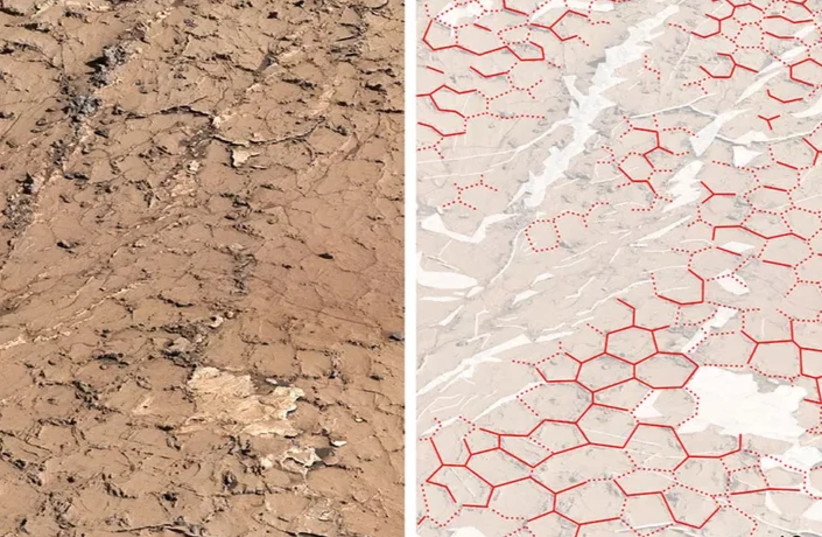Has the Mars rover discovered extraterrestrial life? – study
The Mars rover unmanned mission has discovered unique mud formations stereotypical of wet and dry spells over millions of years on the otherwise dry and cold Mars landscape which may have created the conditions necessary for life, according to a recent study titled ‘Sustained wet-dry cycling on early Mars’ was released in the peer-reviewed journal Nature on August 9, 2023.
”We now have for the first time vestiges of times that could have been conducive to the origin of life,”
William Rapin, lead researcher
The hexagonal patterns discovered are formed when an area has extended wet seasons followed by extended dry ones. It has been known for a while that Mars contains the dried vestiges of rivers, lakes, and even seas as the study noted, “The presence of perennially wet surface environments on early Mars is well documented”.
However, the discovery that this occurred multiple times significantly increases the chances that life once developed there. The possibility remains that such formations may still contain life forms, likely of the microscopic variety.
The dry spells allow time for organic compounds pooled in the wet season to combine, with the lead researcher of the study, William Rapin, a research scientist at the French National Center for Scientific Research in Toulouse, France, noting that such conditions can even lead to the formation of DNA.”We now have for the first time vestiges of times that could have been conducive to the origin of life,” Rapin said in an interview with Space.com.
 A close-up of a panorama taken by the Curiosity rover’s Mastcam at a Martian site called Pontours reveals hexagonal patterns — outlined in red in the same image, right — that suggest these mud cracks formed after many wet-dry cycles occurring over years. (credit: NASA/JPL-Caltech/MSSS/IRAP)
A close-up of a panorama taken by the Curiosity rover’s Mastcam at a Martian site called Pontours reveals hexagonal patterns — outlined in red in the same image, right — that suggest these mud cracks formed after many wet-dry cycles occurring over years. (credit: NASA/JPL-Caltech/MSSS/IRAP)“On Earth, people have run experiments that have shown that if you subject a rock to cycles of wet and dry spells, simple organic molecules can combine and form larger molecules, such as proteins, and even RNA and DNA,” Rapin told Space.com.
The shape of the mud cracks is unique
The shape of the formation was also unique. Previous mud cracks found have all been in ‘T’ shape formations. The hexagonal ‘Y’ shape of these mud cracks marks the first time this has been seen on the red planet. Such formations suggest a distinctly long period of wet and dry spells, according to Rapin per Space.com.
Such ‘Y’ formations are incredibly susceptible to erosion and this may be why none have been discovered before.
Having found the most likely conditions in which Martian life could have formed, researchers will now be able to hone in on similar locations in the relentless search for extraterrestrial life.





Comments are closed.